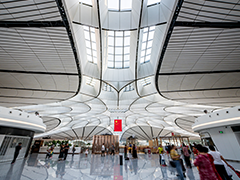Emergency Broadcast System Design Requirements
- Categories:Industry News
- Time of issue:2018-09-26 14:42
- Views:
(Summary description)Emergency broadcast speakers should be placed in public places such as walkways, halls, restaurants, etc.
Emergency Broadcast System Design Requirements
(Summary description)Emergency broadcast speakers should be placed in public places such as walkways, halls, restaurants, etc.
- Categories:Industry News
- Time of issue:2018-09-26 14:42
- Views:
Emergency Broadcast System Design Requirements

First, the setting of the fire accident broadcast speaker should meet the following requirements:
? Emergency broadcast speakers should be placed in public places such as walkways, halls, restaurants, etc., and the number should be such that the walking distance from any part of the floor to the nearest speaker is no more than 25 meters. Speakers should be placed at the intersection of the walkway and at the corner. The last speaker at the end of the walkway is no more than 12 meters from the wall. The rated power of each speaker should not be less than 3W.
· Speakers with background noise in air-conditioned machine rooms, ventilation rooms, laundry rooms, entertainment venues and parking garages. The sound pressure level of the farthest playback in the playback range should be 15dB higher than the background noise, and the speaker should be determined accordingly. power.
· The speaker power in the room should not be less than 1W.
Second, the fire accident broadcast output shunt should be controlled according to the evacuation order, the floor control procedure for playing the evacuation command is as follows:
? In the event of a fire on the N and N floors, the upper and lower floors of the fire layer should be connected first.
· In case of fire on the first floor, the floor, the second floor and the underground floor should be connected first.
· In case of fire in the basement, the underground floor and the first floor should be connected first.
The OBO OBT-8910 has 30 channels of zoned alarms, which can realize N±1 to N±4. The bus system has strong power supply control and can be extended to 120 partitions.
3. When a fire accident broadcast is used in conjunction with a service broadcast or a commercial broadcast, the following requirements shall be met:
· In the fire control room, the speaker and corresponding power amplifier of the fire evacuation layer should be forcibly transferred to the fire accident broadcast state.
· Speakers should be installed in the bedside table of the room and should have a fire broadcast function.
· The fire control room should be able to monitor the working status of the fire amplifier.
? If the fire accident broadcast is combined with a service broadcast or a commercial broadcast with a volume switch, the system should use a three-wire system to force the fire to be broadcast.
Fourth, the fire alarm broadcast feeder voltage should not be greater than 100V. The feeder isolation voltage is set on each floor to ensure that when any of the branches is faulty, the normal broadcast of other branches should not be affected.
Scan the QR code to read on your phone
Related News

OBT WeChat

OBT Mobile Website
Copyright © Shenzhen OBTPA Technology Co.,Ltd. 粤ICP备18028288号






